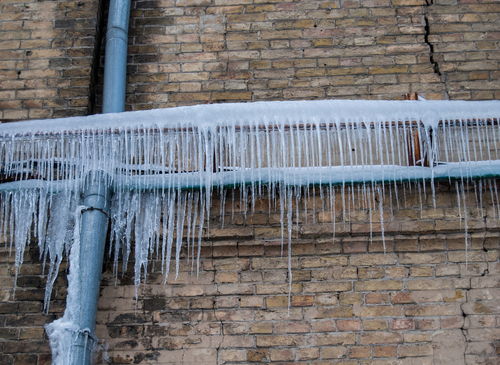What're your ideas about Winter Plumbing Precautions: Preventing Frozen Pipes?

Winter can wreak havoc on your pipes, particularly by freezing pipelines. Right here's just how to avoid it from taking place and what to do if it does.
Intro
As temperature levels decline, the threat of icy pipes increases, possibly resulting in pricey repair work and water damages. Understanding exactly how to avoid icy pipelines is vital for property owners in chilly environments.
Recognizing Icy Pipes
What triggers pipelines to ice up?
Pipelines ice up when exposed to temperature levels below 32 ° F (0 ° C) for prolonged durations. As water inside the pipelines freezes, it broadens, putting pressure on the pipeline wall surfaces and possibly causing them to burst.
Risks and damages
Frozen pipelines can cause supply of water disturbances, building damages, and pricey fixings. Ruptured pipes can flood homes and create considerable structural damages.
Indicators of Frozen Pipeline
Identifying icy pipes early can prevent them from breaking.
How to recognize frozen pipelines
Look for reduced water flow from taps, uncommon odors or sounds from pipes, and noticeable frost on exposed pipelines.
Avoidance Tips
Protecting at risk pipelines
Wrap pipelines in insulation sleeves or use warmth tape to safeguard them from freezing temperature levels. Concentrate on pipelines in unheated or outside locations of the home.
Home heating methods
Maintain interior areas appropriately heated up, specifically areas with plumbing. Open up cabinet doors to enable warm air to distribute around pipes under sinks.
Securing Outside Plumbing
Yard pipes and outside taps
Detach and drain pipes yard pipes before winter months. Set up frost-proof spigots or cover outside faucets with shielded caps.
What to Do If Your Pipes Freeze
Immediate activities to take
If you suspect icy pipelines, keep taps open up to eliminate stress as the ice thaws. Make use of a hairdryer or towels soaked in warm water to thaw pipes gradually.
Long-Term Solutions
Architectural modifications
Think about rerouting pipelines away from outside walls or unheated locations. Add added insulation to attics, cellars, and crawl spaces.
Upgrading insulation
Purchase premium insulation for pipelines, attics, and wall surfaces. Correct insulation assists maintain constant temperature levels and decreases the danger of icy pipelines.
Conclusion
Protecting against icy pipes requires aggressive steps and quick actions. By recognizing the reasons, indicators, and safety nets, homeowners can safeguard their plumbing during cold weather.
5 Ways to Prevent Frozen Pipes
Drain Outdoor Faucets and Disconnect Hoses
First, close the shut-off valve that controls the flow of water in the pipe to your outdoor faucet. Then, head outside to disconnect and drain your hose and open the outdoor faucet to allow the water to completely drain out of the line. Turn off the faucet when done. Finally, head back to the shut-off valve and drain the remaining water inside the pipe into a bucket or container. Additionally, if you have a home irrigation system, you should consider hiring an expert to clear the system of water each year.
Insulate Pipes
One of the best and most cost-effective methods for preventing frozen water pipes is to wrap your pipes with insulation. This is especially important for areas in your home that aren’t exposed to heat, such as an attic. We suggest using foam sleeves, which can typically be found at your local hardware store.
Keep Heat Running at 65
Your pipes are located inside your walls, and the temperature there is much colder than the rest of the house. To prevent your pipes from freezing, The Insurance Information Institute suggests that you keep your home heated to at least 65 degrees, even when traveling. You may want to invest in smart devices that can keep an eye on the temperature in your home while you’re away.
Leave Water Dripping
Moving water — even a small trickle — can prevent ice from forming inside your pipes. When freezing temps are imminent, start a drip of water from all faucets that serve exposed pipes. Leaving a few faucets running will also help relieve pressure inside the pipes and help prevent a rupture if the water inside freezes.
Open Cupboard Doors
Warm your kitchen and bathroom pipes by opening cupboards and vanities. You should also leave your interior doors ajar to help warm air circulate evenly throughout your home.

We had been shown that editorial on 6 Ways to Prevent Frozen Pipes from a friend on another site. Sharing is caring. You won't know, you could be helping someone out. Thanks for your time. Don't hesitate to pay a visit to our blog back soon.
Get Offer